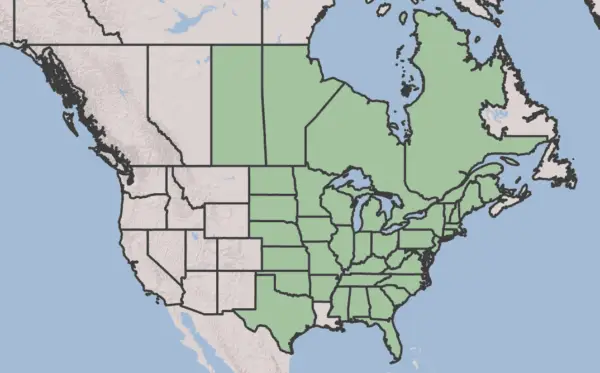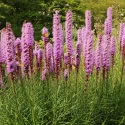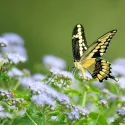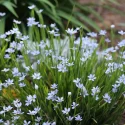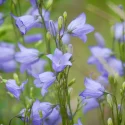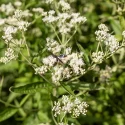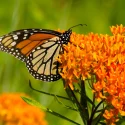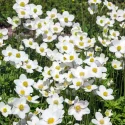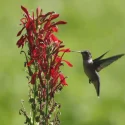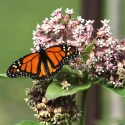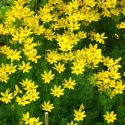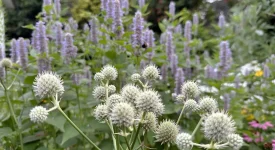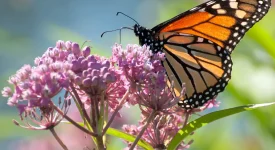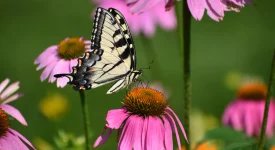This delicate native plant flowers to coincide with the arrival of its main pollinator: ruby-throated hummingbirds. Each red-petaled flower hangs down, revealing a vibrant yellow interior whenever the wind blows. The shape of the flower is perfectly shaped for hummingbird beaks. They are exceptionally easy to grow and like part-shade to full sun. Plant them together in clumps to bring bright color and hummingbirds to your yard.
- Part Sun, Full Shade
- Short (under 3')
- Spring flowers
- Hummingbird favorite

What are the benefits of planting Red Columbine?
Native plants like Red Columbine (Aquilegia canadensis) have lived in North America for thousands of years. Every drought, blizzard, or weather event they have lived through. They know (and thrive!) in the soil and weather of their home area. All they need is rain to thrive.
Native plants are always the most resilient, easy to care for, and beautiful choices for landscaping. They require minimal care (especially compared to lawns!) and can return decades of beauty.
How do you plant Red Columbine?
Red Columbine thrives in a wide range of sun
Red Columbine is a great plant for beginner gardeners: it thrives in part sun to shade. (In nature, it lives in partly shaded forests.)
Where should you plant Red Columbine?
Red Columbine likes well-drained soil. To use a quote from Harriet Keeler’s 1916 book on wildflowers: “The Columbine dwells of choice on sunny, rocky slopes in open woods where soil is sparse and well drained.” For gardens today, this means that hillsides, rock gardens, and sloping gardens are perfect places for this native gem.
Added bonus: Red Columbine is drought tolerant
This plant thrives with neglect once it’s established after the first year. The Birdeyes—a couple devoted to native plants (and owners of Birdseye frozen veggie empire!) said it simply in their book Growing Woodland Plants:
“Requires almost no care and spreads rapidly by seed. Its perennial rootstock goes deep into the soil and enables it to survive even the worst droughts.”
This is great to hear, especially for all of us gardeners who originally thought we had “black thumbs” when it came to plants. Planting Red Columbine helps make beautiful gardening easier than non-native plants, while helping hummingbirds thrive.
Where is Red Columbine native?
Red Columbine is native to more than half of the United States: from Maine to Florida, and west to Texas. It is also native to 3/4 of Canada.
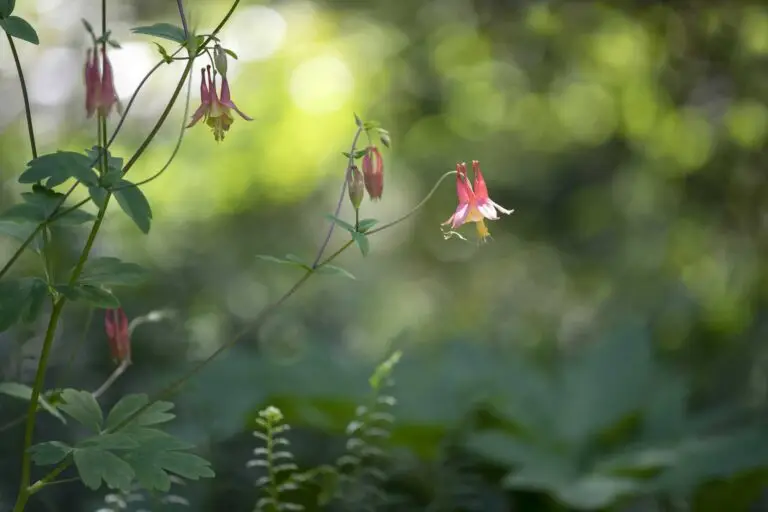
Added bonus: Red Columbine is deer-proof
Deer do NOT eat Red Columbine! If you’re worried about deer nibbling your garden, these are a perfect native plants.
What are other native plants for hummingbirds?
Hummingbirds are well worth building a garden around, and their favorite nectar sources are always native plants. Read our hummingbird gardening guide for lots of tips.
Native flowers like Cardinal Flower, Coral Honeysuckle, Firebush, and Hummingbird Mint are all worthy hummingbird-favorite companions to Red Columbine.
Red Columbine is so easy to grow and offers loads of vibrant color (and hummingbirds!) in the spring. They thrive in a wide range of sunshine, from full sun to part shade, making them so easy for beginning gardeners. They are easy to plant from seed and grow from plants. Give them a spot in your garden that ensures you can watch hummingbirds sip nectar from inside your house. Happy planting!
Sources
- Keeler, Harriet L. (Harriet Louise), 1846-1921, Eloise P Luquer, and Mary Keffer. Our Early Wild Flowers: a Study of the Herbaceous Plants Blooming In Early Spring In the Northern States. New York: Scribner, (1916), 67.
- Nelson, Gil. Best Native Plants for Southern Gardens: A Handbook for Gardeners, Homeowners, and Professionals, (2010)
- Harstad, Carolyn. Go Native! Gardening with Native Plants and Wildflowers in the Lower Midwest. (1999), 209-210.
